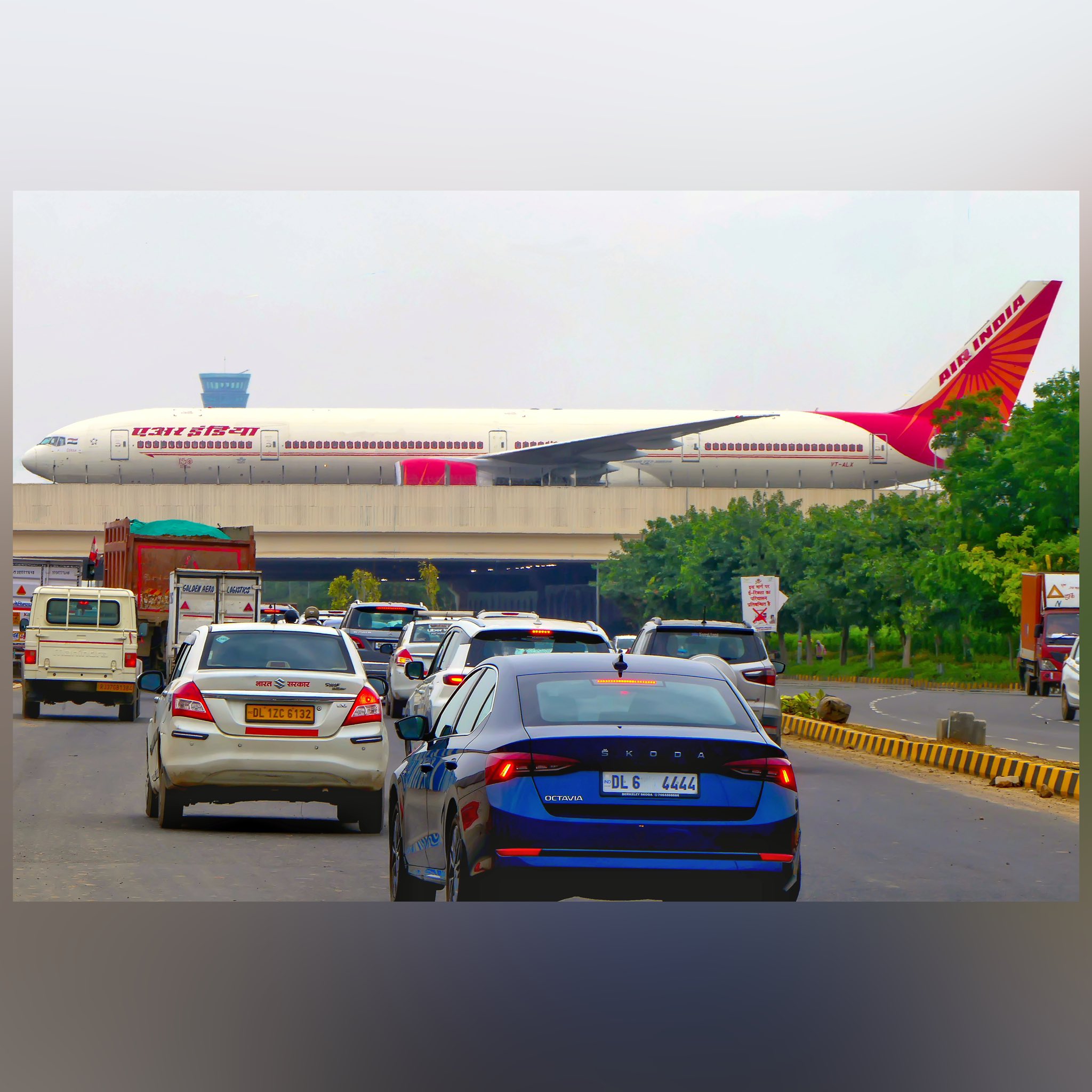
Airports worldwide are continually evolving to enhance both passenger experience and operational efficiency. Among the latest innovations, Delhi Airport's Eastern Cross Taxiways (ECT), operational since July, has emerged as a potential game-changer for airlines, promising substantial cost savings and environmental benefits. This elevated cross taxiway, spanning 2.1 km, is designed to accommodate wide-body aircraft, revolutionizing the taxiing experience for carriers.
The primary advantage of the Eastern Cross Taxiways lies (between the southern pair of runways and northern pair of runways which has a separation of 2.1 Km) in its ability to significantly reduce taxiing time, leading to operational efficiency and considerable financial savings for airlines. It is reported that airlines operating at Delhi's Indira Gandhi International Airport (IGIA) could achieve annual savings of approximately Rs 150-180 crore (approximately $21 million). The savings are attributed to a reduction in both fuel consumption and the time spent on the tarmac for aircraft.
The dual-lane design of the ECT allows for the simultaneous passage of two aircraft, including wide-body jets like the A380, B777 and B747. With each lane boasting a width of 44 meters and a 47-meter gap between them, the taxiing process becomes seamless, contributing to more efficient airport operations.
The Eastern Cross Taxiways not only promise financial benefits but also align with the aviation industry's commitment to a sustainable future. According to estimates, the ECT could save approximately 55,000 tonnes of carbon dioxide emissions annually. This reduction is equivalent to planting about 15 lakh trees, highlighting the positive environmental impact of this innovative infrastructure.
Each liter of Aviation Turbine Fuel produces 2.5-3 kg of CO2 and the estimated savings of 55,000 tonnes of CO2 translate to a significant reduction in fuel consumption. With each tonne of Aviation Turbine Fuel costing around $1,199, the ECT's operational efficiency is projected to deliver substantial financial savings for airlines, making it an attractive investment for sustainable aviation practices.
The Eastern Cross Taxiways play a crucial role in connecting the northern and southern airfields on the eastern side of Delhi Airport. This connectivity enhancement contributes to a significant reduction in taxiing distance, further optimizing efficiency. As a result, both domestic and international flight operations become more sustainable and economical.
The technical specifications of the ECT, including its ability to accommodate wide-body aircraft and allow for simultaneous dual-lane operations, make it a versatile and dynamic addition to Delhi Airport's infrastructure. As the aviation industry continues to emphasize sustainability, the Eastern Cross Taxiways present a forward-looking solution that benefits both airlines and the environment.
The Eastern Cross Taxiways at Delhi Airport represent a significant step forward in the pursuit of operational efficiency, cost savings and environmental sustainability for the aviation industry. As airports worldwide continue to explore innovative solutions, the success of the ECT serves as a compelling example of how infrastructure improvements can positively impact both the bottom line for airlines and the global effort to reduce carbon emissions.
If you need any services, drop us a mail at Rohitkumar.Singh@gmrgroup.in or get in touch with us at +919717199753.